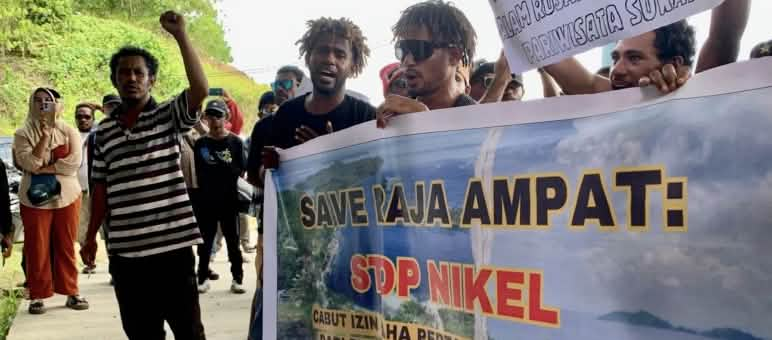
Indonesia: Will the Raja Ampat Islands be destroyed for nickel?
Indigenous people and environmental groups are protesting against the nickel industry’s expansion into the Raja Ampat Islands off the coast of Papua. Abundant marine life and pristine coral are at risk.
Update: September 2025
Since September 3, 2025, the state-owned nickel company PT Gag Nikel has resumed operations in the Raja Ampat Islands. In early June, the company was forced to temporarily suspend its work after large-scale protests in Raja Ampat and Jakarta.
The government has now even awarded PT Gag Nikel the “proper” certificate, claiming it demonstrates the company’s exemplary environmental program. Meanwhile, the law protecting small islands and coastal ecosystems continues to be ignored. The environment minister has even asserted that the law does not in fact prohibit open-pit mining.
Update: June 5, 2025
PT Gag Nikel has been ordered to halt nickel ore mining. In response to demonstrations on the Raja Ampat Islands and the protest action at the Indonesia Critical Minerals Conference, the Ministry of Energy and Mineral Resources has ordered the state-owned company Gag Nikel to suspend operations for the time being. For more on the protest action on June 3, see the report on our Indonesian website.
Another jewel of biodiversity and natural beauty is being destroyed in Asia. On the Raja Ampat Islands, four companies are mining nickel ore in an area that covers more than 21,000 hectares!
The Raja Ampat Islands, off the coast of the island of New Guinea, are made up of hundreds of small and some larger islands.
The islands are located in the Coral Triangle: extremely rich and diverse marine ecosystems including 540 species of coral, 1,511 species of fish and thousands of other species of marine life. 75 percent of all known coral species worldwide are found here. Even the larger Great Barrier Reef in Australia has far fewer species to offer. Due to its beautiful underwater world, Raja Ampat is very popular with divers.
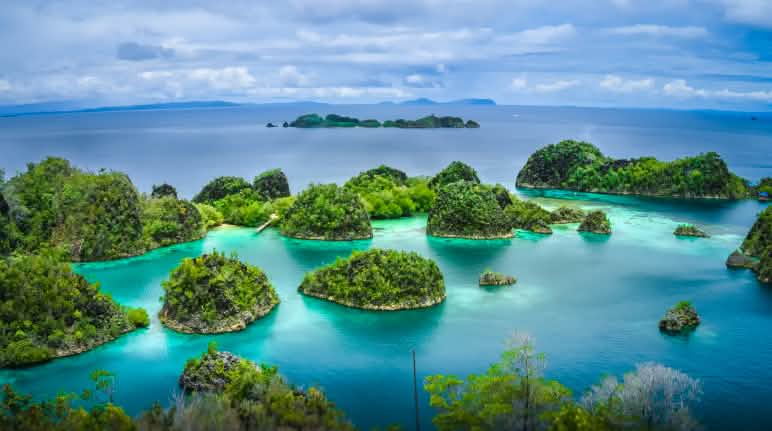
But Indonesia wants more economic growth and to become the global center of the nickel industry. It is why four mining companies operate here: PT Gag Nikel, PT Anugerah Surya Pratama, PT Kawei Sejahtera Mining and PT Mulia Raymond Perkasa. PT Gag Nikel controls the entire Gag Island and the surrounding sea: an area of more than 13,000 hectares. PT Kawei Sejahtera Mining has deforested the island of Kawei. Now the government has issued a new permit for nickel mining to PT Mulia Raymond Perkasa (MRP) on the islands of Manyaifun and Batang Pele.
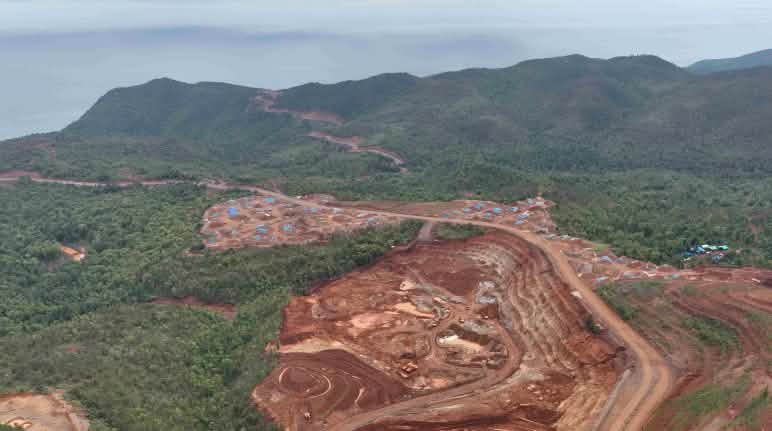
The forests of Batang Pele and Manyaifun are officially protected and almost the entire district has been a UNESCO Raja Ampat Geopark since 2023. Nickel mining is threatening national and international nature conservation. The project also violates the constitution and the law on the protection of small islands.
Nickel is a valuable raw material used in the steel industry and for the production of batteries for electric vehicles. Indonesia already accounts for around a quarter of all nickel ore.
The largest nickel mine is that of the Brazilian company Vale on the island of Sulawesi.
In the last few years, a huge processing industry has developed on Sulawesi and in the Moluccas with nickel smelters and industrial zones operated by Chinese companies.
The consequences are dramatic: destruction of the rainforests and oceans, drastic loss of the significant biodiversity of this region between Asia and Australia, contamination of the sea and the air, loss of the population's livelihoods—all for more steel, electric cars and smartphones.
Nickel mining on Raja Ampat is a betrayal of nature and the people of Raja Ampat,”
... says Yohan Sauyai from the Alliance of Conservationists of Raja Ampat (ALJARA). “The nickel mining on Batang Pele and Manyaifun will damage the coasts because the tailings from the mines will end up on the coast and in the sea, destroying mangroves and coral reefs and devastating fish habitats and other marine life.”
The population of the islands of Batang Pele and Manyaifun depends on a healthy, natural environment. The people are traditional fishermen and farmers and rely on tourism. They are therefore fighting against the destruction of the environment by the nickel industry, the loss of agricultural land, the contamination of their drinking water and the destruction of fish stocks.
ALJARA, Indigenous communities and tourism stakeholders protested on May 26, 2025 in front of the Raja Ampat parliament.
This is a time bomb. MRP has obtained the permit in secret, without consultation and without the consent of the Indigenous population.”
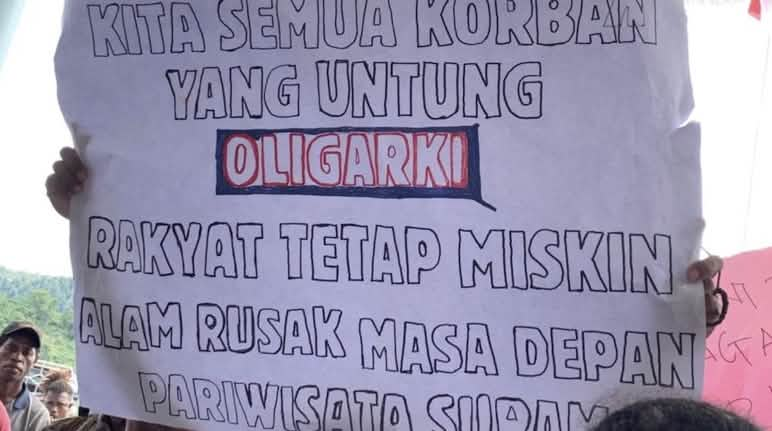
More information:
ALJARA position paper on nickel mining on Raja Ampat dated May 26, 2025
(Indonesian): https://drive.google.com/file/d/19GwxZF827sTKxucTHcNN--g-J9bKizD9/view
Auriga Nusantara: Status of Deforestation in Indonesia 2024. on nickel mining in Raja
Ampat see chapter 6: https://simontini.id/en/status-of-deforestation-in-indonesia-2024
MSN media report on the study by Auriga:
UNESCO Geopark Raja Ampat: https://rajaampatgeopark.com/ and https://rajaampatgeopark.com/geopark-center/our-geosites/
NGO Pusaka about the protest in May 2025 (Indonesian): https://pusaka.or.id/news/aksi-aliansi-jaga-alam-raja-ampat-tolak-ekspansi-dan-eksploitasi-pertambangan-nikel/
NGO JUBI about the protest in May 2025 (Indonesian): https://jubi.id/lingkungan/2025/aljara-tolak-penambangan-nikel-di-raja-ampat/
The larger islands include Waigeo, Batanta, Salawati and Misool.
The Coral Triangle in the Indo-Pacific between the Philippines, Borneo, New Guinea and the Solomon Islands is the center of marine species diversity.
This page is available in the following languages:
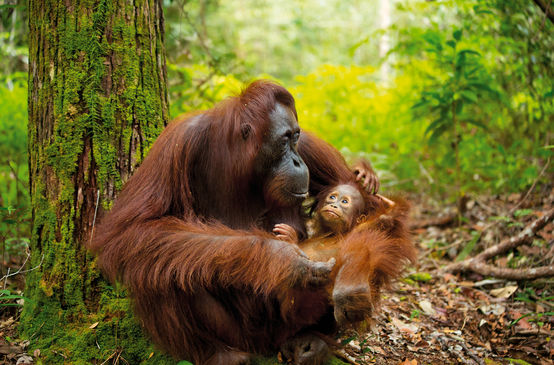
Defending rainforests in Southeast Asia
The forests of Southeast Asia are the last refuge and habitat of orangutans, Sumatran tigers, birds of paradise and Komodo dragons.
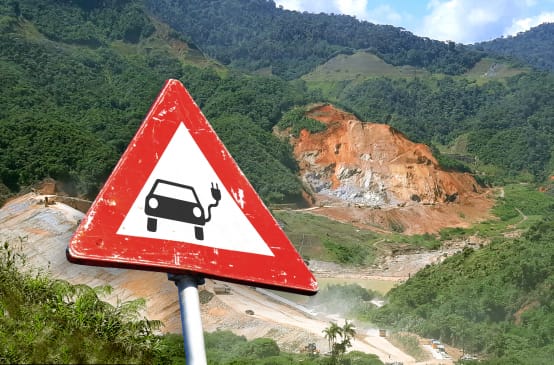
Yes to the ‘green revolution' – but without copper and nickel from the rainforest!
We consume far more metals than is sustainable, and electric cars are exacerbating the problem. We need to transition to a circular economy and new mobility concepts.
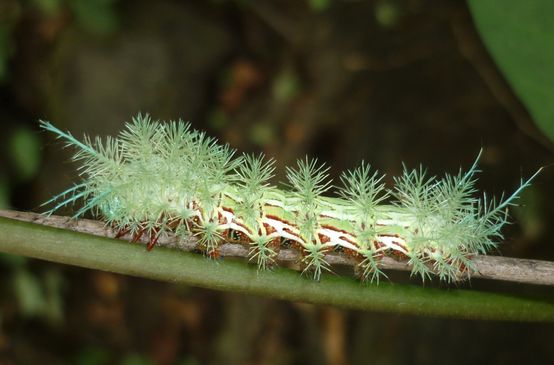
Biodiversity
Life on Earth originated around 4 billion years ago. Since then, an unfathomable number of species have evolved, around half of which are insects. Numerous plant and animal species have yet to be documented, and many new ones are being discovered every day.